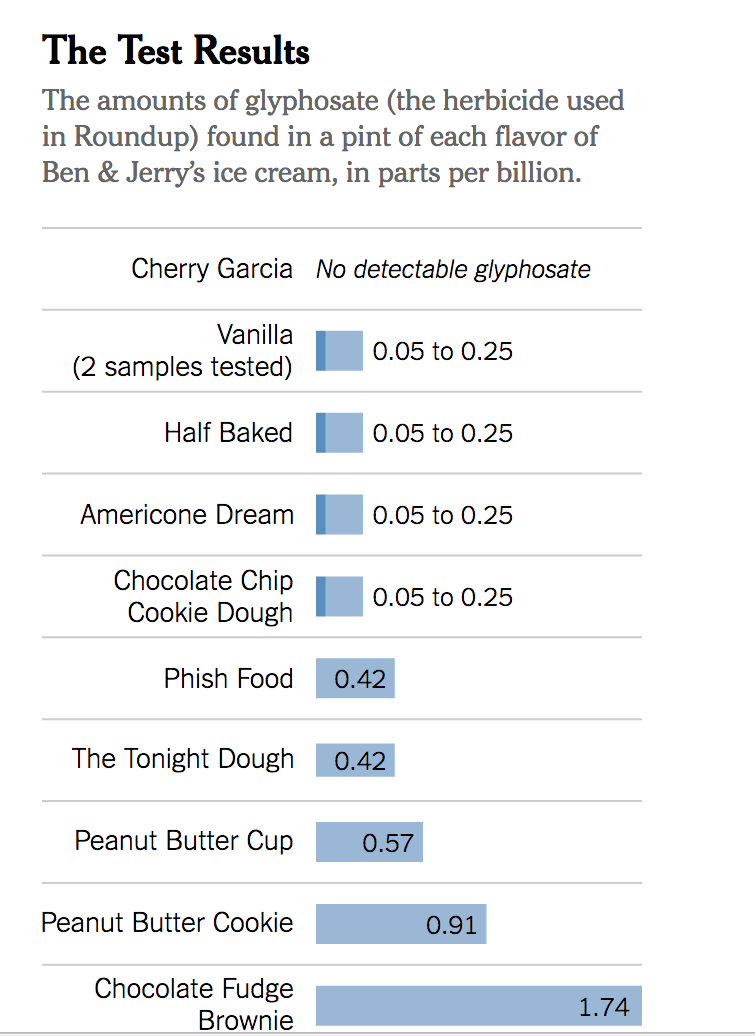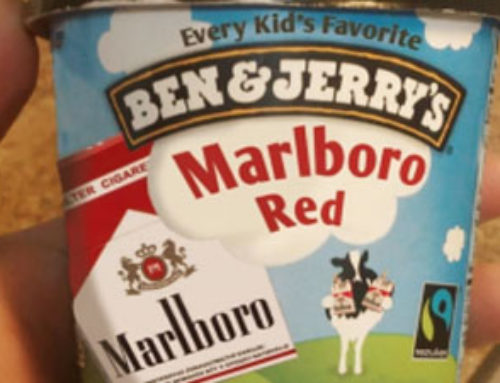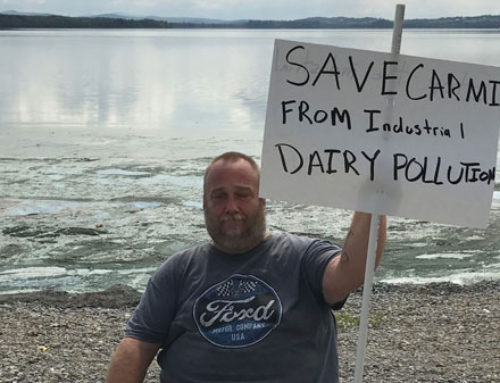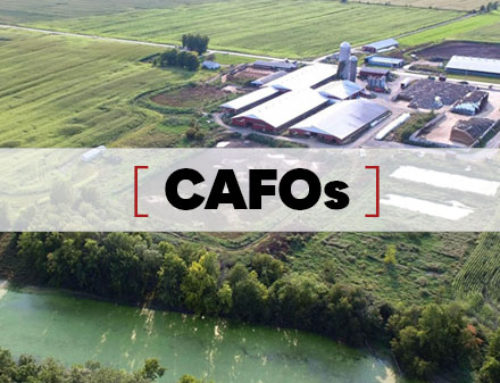 Regeneration Vermont: The New York Times is exposing the fact that RoundUp herbicide has been found in Ben & Jerry’s ice cream. We are not surprised. We have been sounding the alarm about the dangerous trends in the Vermont dairy industry for decades. It’s time to hold Ben & Jerry’s accountable for the damage and to demand the necessary transition to organic/regenerative methods. The executives at Ben & Jerry’s know how damaging their milk supply chain is. They know that labor is being abused. They know that cows are burning out before they are five years old. They know that antibiotics are being misused. They know that the dairies that supply their milk are polluting our drinking water and most of the rivers and lakes in Vermont. They know – because we’ve been telling them for years. Join us in our campaign for a statewide regenerative transition.
Regeneration Vermont: The New York Times is exposing the fact that RoundUp herbicide has been found in Ben & Jerry’s ice cream. We are not surprised. We have been sounding the alarm about the dangerous trends in the Vermont dairy industry for decades. It’s time to hold Ben & Jerry’s accountable for the damage and to demand the necessary transition to organic/regenerative methods. The executives at Ben & Jerry’s know how damaging their milk supply chain is. They know that labor is being abused. They know that cows are burning out before they are five years old. They know that antibiotics are being misused. They know that the dairies that supply their milk are polluting our drinking water and most of the rivers and lakes in Vermont. They know – because we’ve been telling them for years. Join us in our campaign for a statewide regenerative transition.A growing number of foods commonly found in kitchens across America have tested positive for glyphosate, the herbicide that is the main ingredient in the popular consumer pesticide Roundup, which is widely used in agriculture. But few brands on that list are as startling as the latest: Ben & Jerry’s, the Vermont ice cream company known for its family-friendly image and environmental advocacy.
The Organic Consumers Association announced Tuesday that it found traces of glyphosate in 10 of 11 samples of the company’s ice creams — although at levels far below the ceiling set by the Environmental Protection Agency.
Rob Michalak, global director of social mission at Ben & Jerry’s, said the company was working to ensure that all the ingredients in its supply chain come from sources that do not include genetically modified organisms, known as G.M.O.s. None of its plant-based ingredients, for instance, come from a genetically engineered crop like corn or soy, where glyphosate is used in production. The company is also trying to figure out a cost-effective way for the dairy farms that supply its milk to use non-G.M.O. feed.
“We’re working to transition away from G.M.O., as far away as we can get,” Mr. Michalak said. “But then these tests come along, and we need to better understand where the glyphosate they’re finding is coming from. Maybe it’s from something that’s not even in our supply chain, and so we’re missing it.”
Consumer groups around the country, including the Organic Consumers Association, have begun raising awareness of glyphosate in food, because some studies have linked it to a variety of diseases. The International Agency for Research on Cancer, a unit of the World Health Organization, declared this yearthat it “probably” could cause some cancers. The agency reviewed scientific studies involving people, laboratory animals and cells to assess whether glyphosate might cause cancer.
Monsanto and other companies that make products containing glyphosate hotly dispute those studies and say there is no reason for concern. Government and other regulators tend to agree that very low levels are not harmful to humans.
Ronnie Cummins, a founder and the international director of the Organic Consumers Association, said the amount found in Ben & Jerry’s ice cream would not violate any regulations. “Not everyone agrees with the acceptable levels governments have set,” Mr. Cummins said. “And, anyway, would you want to be eating this stuff at all?”
It’s far from clear. Divergent findings over glyphosate’s impact on health have divided governments, scientists, regulators and even the World Health Organization, with its International Agency for Research on Cancer linking it to cancer and another unit of the organization insisting on its safety.
Here is what we know:
• The levels of glyphosate found in Ben & Jerry’s ice creams are, indeed, small, according to government regulators and the scientist who did the testing.

Among the flavors tested, Ben & Jerry’s Chocolate Fudge Brownie showed the highest levels of glyphosate, with 1.74 parts per billion, and glyphosate’s byproduct aminomethylphosphonic acid registering 0.91 parts per billion.
Such amounts might seem negligible. John Fagan, t
he chief executive of the Health Research Institute Laboratories, which did the testing for the Organic Consumers Association, calculated that a 75-pound child would have to consume 145,000 eight-ounce servings a day of Ben & Jerry’s Chocolate Fudge Brownie ice cream to hit the limit set by the Environmental Protection Agency, the government body charged with setting a ceiling on the amount of glyphosate allowed in food.
An adult would have to eat 290,000 servings to hit the agency’s cutoff, Dr. Fagan said.
Even European regulatory limits for glyphosate consumption, which are almost six times lower than limits in the United States, find that a child would have to eat 25,000 servings a day and an adult 50,000 for the herbicide to pose a threat.
“Based on these government thresholds, the levels found in Ben & Jerry’s Chocolate Fudge Brownie ice cream would seem totally irrelevant,” he said.
• But recent research suggests that the glyphosate levels still might besignificant. In research published this year in the journal Nature, rats that consumed very low doses of glyphosate each day showed early signs of fatty liver disease within three months, which worsened over time.
In that study, conducted by a group of scientists at King’s College London and led by Michael Antoniou, a molecular biologist, the rats consumed in a day an amount of glyphosate equivalent to a child’s portion of Ben & Jerry’s Chocolate Fudge Brownie ice cream, Dr. Fagan said.
Monsanto, the largest seller of products containing glyphosate, labeled the research“bad science” and the rehashing of a study done five years earlier. Some scientists criticized the more recent study for failing to disclose the age of the rats, which could affect outcomes, and for using a breed prone to tumors.
“There were a number of criticisms of that study that were absolutely not true,” said David Schubert, a professor at the Salk Institute for Biological Studies who works on neurodegenerative diseases. “But the industry does what it can to make the science very confusing to a layperson.”
Dr. Schubert pointed to a study in the journal Cell Chemical Biology that came out shortly after the one led by Dr. Antoniou, which found that when a body processes glyphosate, one of the herbicide’s byproducts interfered with the body’s ability to break down fatty acids. The accumulation of fatty acids is a signature of fatty liver disease.
“It basically confirms what Antoniou showed in his research,” Dr. Schubert said.
• One of the consumer groups pointing at Ben & Jerry’s may have a larger motive.
The Organic Consumers Association has been working with an organization called Regeneration Vermont to persuade Ben & Jerry’s to go organic. Federal regulations governing organic agriculture prohibit the use of glyphosate.
To make its point, the association also had the Health Research Institute test four organic brands of vanilla ice cream — Alden’s, Three Twins, Julie’s and the Whole Foods Market brand 365. The lab found 0.25 to 0.5 parts per billion of glyphosate’s byproduct, aminomethylphosphonic acid, in the 365 sample, but no detectable traces of glyphosate or its byproduct in the other samples.
“If they went organic, they wouldn’t have this problem,” said Will Allen, a founder of Regeneration Vermont and an organic farmer who has met with Ben & Jerry’s executives.
Other groups testing for glyphosate have found it in Quaker Oats, Cheerios, Ritz Crackers and Stacy’s Simply Naked Pita Chips, among a range of other products. The companies behind those products have all noted that the glyphosate amounts fell well below regulatory limits.
Many of those products have few or no ingredients derived from genetically engineered crops like corn, soy and sugar beets, which are meant to withstand glyphosate. Some of those products have nonetheless tested for glyphosate registered at much higher levels than those found in Ben & Jerry’s ice creams.
Both Mr. Cummins, of the Organic Consumers Association, and Mr. Michalak, of Ben & Jerry’s, said the glyphosate found in Ben & Jerry’s probably comes from add-ins like peanut butter and cookie dough. Such products contain ingredients like wheat, oats and peanuts that are often sprayed with the herbicide to dry them out.
• Regardless, this may be only the beginning for consumer brands, which will face increasing scrutiny over glyphosate.
For the past few years, consumer and environmental groups have started testing for glyphosate in food, because, while the government routinely tests foods for a variety of pesticides, it does not regularly test for glyphosate.
In 2011, the Agriculture Department conducted a special test of 300 soybean samples for glyphosate and found the herbicide in 271 of them, according to Carey Gillam, the author of “Whitewash: The Story of a Weed Killer, Cancer, and the Corruption of Science,” a book about glyphosate that will go on sale in October.
“Regulators have turned a blind eye toward trying to figure out what levels of glyphosate are in our food supply,” Ms. Gillam said.
The Agriculture Department did not respond to a request for comment.
The Food and Drug Administration is responsible for enforcing maximum pesticide residue levels for any foods in interstate commerce, and it issues an annual reporton pesticide residue found in food — with the exception of glyphosate.
Megan McSeveney, a spokeswoman for the agency, said the methods used in its annual tests cannot detect glyphosate because of its chemical makeup and how it degrades. Available methods of testing, she added, are costly and labor intensive. In 2014, after the Government Accountability Office sharply criticized the agency for failing to test for glyphosate — and also for not disclosing that fact to the public — the Food and Drug Administration said it would cost about $5 million to start such testing.
The agency, Ms. McSeveney said, planned to test four food commodities — corn, soy, eggs and milk — although she could not say when such testing would begin.
Some food and commodity companies have decided they can’t wait on the government. The Scoular Company, which sells grains and other commodities, has begun requiring farmers who sell the company soybeans and corn to notify it before using any defoliants, including glyphosate.
“We are concerned about the general increase in chemical residues in foods,” said Greg Lickteig, a director at Scoular, “and some of our customers are concerned, too. That’s just the way it is. We now have the ability to know what’s in our food more than we ever have before.”




